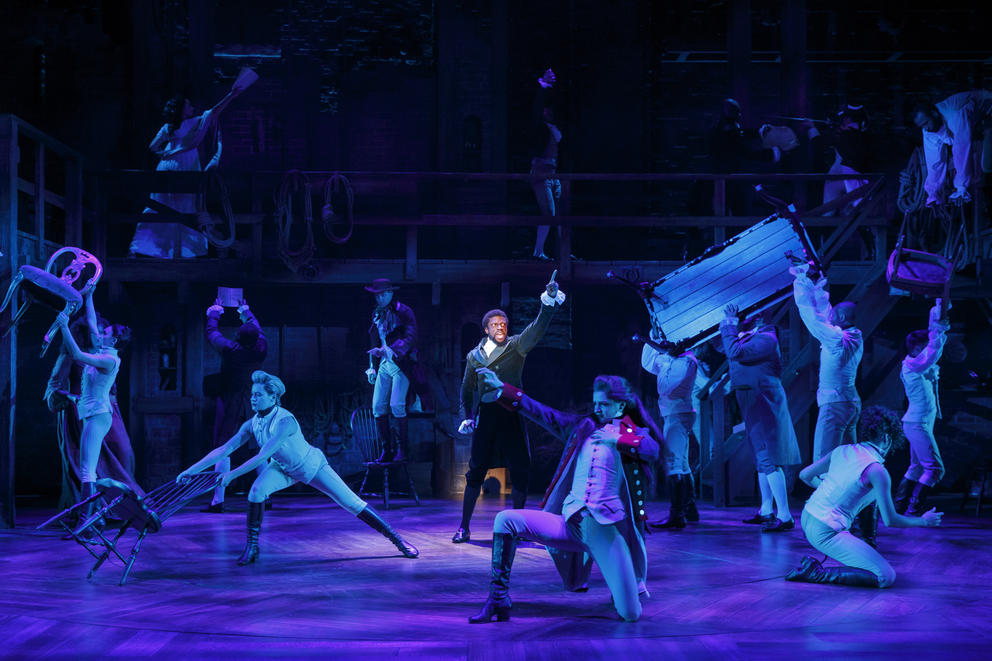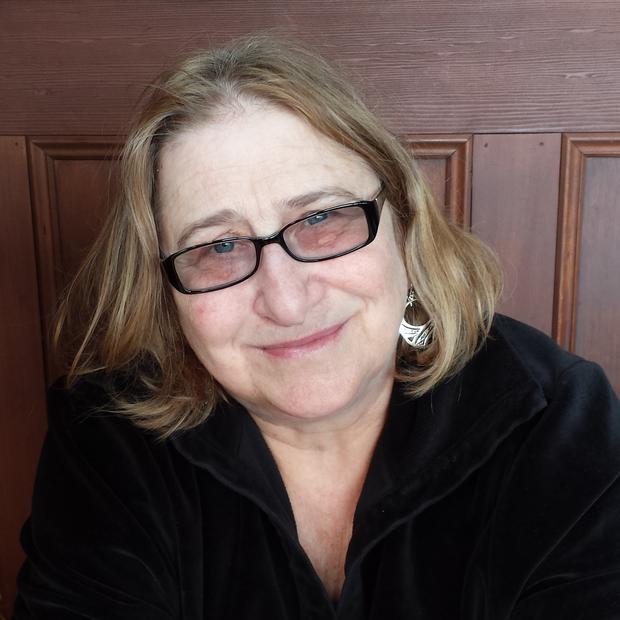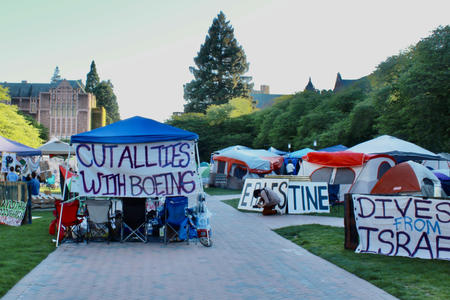Local fan frenzy was in full swing well before the smash hit musical “Hamilton” arrived at Seattle last week at the Paramount Theatre, where it plays through March 18.
The blockbuster, written and composed by theatre Renaissance guy Lin-Manuel Miranda, focuses on the 18th century American statesman Alexander Hamilton. It sprinted onto Broadway in 2015 to thunderous acclaim from critics and audiences.
“Hamilton” broke box office records, collected 11 Tony Awards and a Pulitzer Prize, and its golden touch extended to a Grammy-winning original cast album, a PBS documentary (“Hamilton’s America”) and a popular hard-cover book, “Hamilton: The Revolution.”
The show’s overwhelming success also made the hunt for tickets to see it an expensive venture.
For those able to score ducats, and for others who are simply curious about what the fuss is all about, here are some answers to key questions about “Hamilton” that may clarify what lies beneath the hype.
What are the central differences between “Hamilton” and other hit musicals? What makes it so distinctive?
“Hamilton” isn’t the first Broadway show to use rap-like spoken lyrics in dialogue and song. Miranda, for one, pioneered the practice in his previous, Tony Award-honored musical, “In the Heights” (which the Seattle Repertory Theatre will produce in its 2018-19 season).
But “Hamilton” moves to a propulsive hip-hop beat and a rhyming dialogue far more consistently. That strategy provides a different soundscape from anything else on Broadway —a musical form of broad appeal to younger listeners.
And without any high-tech special effects, but dazzling choreography and powerhouse performances, the show also makes a creative and political statement by casting non-White actors in most roles. This is, obviously, a big switch from how the Anglo-Saxon founding fathers and their spouses are usually dramatized, and more representative of a contemporary American hip hop aesthetic and our multi-racial culture at large.
Dressing people of color in the ruffles-and-velvet style of America’s 18th century elite creates an anachronistic juxtaposition that’s both ironic and sincere. And when the Black performers portraying 1776 revolutionaries sing about freedom from tyranny, it highlights the country’s longtime enslavement of African Americans.
Also novel: using an historical figure to speak to modern concerns, particularly the immigration debate, the intersection of private life and public scandal, and the promise and inequities of a democracy.
And finally, in all its vibrant theatricality, “Hamilton” succeeds where many a high school teacher has failed: it makes American history cool.
How much did “Hamilton” cost to produce initially? And how much is it earning?
The production tab totaled about $12.8 million. On Broadway alone, it is earning close to $2 million a week or about $100 million a year. In a long run in Chicago, at slightly lower prices, it’s earning roughly $80 million a year. The London production and the national tour are also raking in the big bucks.
Why are tickets so expensive? And hard to get?
A simple matter of supply and demand. Executive director Josh Labelle of Seattle Theatre Group, which oversees the Paramount Theatre and its Broadway series, says the original ticket prices ($69 to $179, with some more expensive VIP orchestra seats) were set in accordance with what the local costs and the tour producers’ cut would be, as with all Broadway tours.
But the tickets were first offered at face value only to subscribers of STG’s Broadway series as a perk. Other ticket-seekers were asked to register later with a Ticketmaster Verified Fan site. And even that didn’t guarantee anything.
You can still find scattered seats available on Ticketmaster, Stub Hub and other ticket sites. But most of the latter are so-called secondary sales, which LaBelle says STG has no control over and they tend to offer much costlier tickets. (A recent scan at several sites revealed single ticket prices ranging from the high $200’s to in the thousands of dollars, depending on date and seat location.)
Even if you’re willing to dig deep into your pocket, take care. You can pay an exorbitant price and discover at show time that your ticket is fraudulent. Police recently arrested someone suspected of forging and selling fake tickets. LaBelle also protests how automated “bots” are sometimes used to scoop up masses of tickets for resale, a practice that is illegal in many cases in Washington state.
What about those $10 discount tickets?
There is a lottery for some cheap “Hamilton” seats for each performance. You must register online at a specific time before the performance you want to attend, and quickly buy your ticket if you’re chosen. There are 40 seats offered for each show but only one pair per buyer and no resales are allowed.
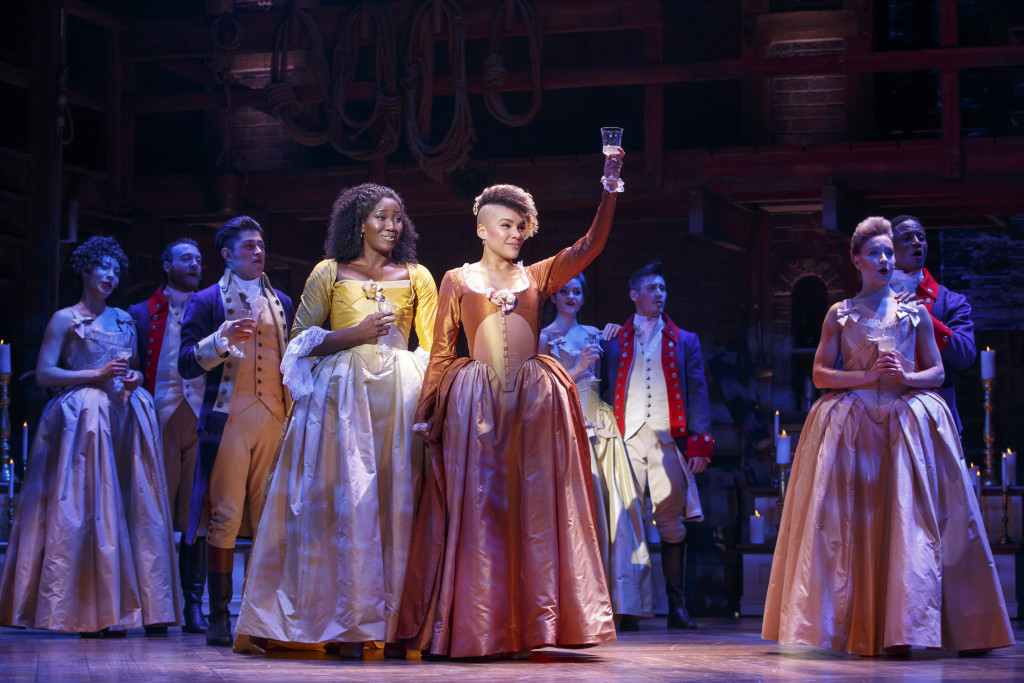
Which U.S. President got a sneak peek at “Hamilton” long before it came to Broadway?
Barack Obama. In May 2009, Miranda appeared at the White House for a concert attended by President Obama and First Lady Michelle Obama.
“I’m actually working on a hip-hop album, a concept album about somebody who I think embodies hip-hop: Treasury Secretary Alexander Hamilton,” Miranda announced. Acknowledging the laughter that followed (was he joking?), he then launched into the first public performance of the show’s opening number. It earned a standing ovation, led by Obama who later caught the show on Broadway in 2015 with his teenage daughters.
Which U.S. vice president got an earful in a curtain speech at “Hamilton”?
Mike Pence. When Pence saw it on Broadway last November, cast member Victor Brandon Dixon delivered post-show remarks to him from the stage on behalf of the ensemble.
“We, sir — we — are the diverse America who are alarmed and anxious that your new administration will not protect us, our planet, our children, our parents, or defend us and uphold our inalienable rights,” Dixon said. “We truly hope that this show has inspired you to uphold our American values and to work on behalf of all of us.”
Pence later said he was not offended by the speech. President Donald Trump, however, fired off a tweet saying Pence was “harassed” by the cast and, “This should not happen!”
What 800-plus page book is “Hamilton” based on?
Ron Chernow’s scholarly 2004 biography “Hamilton,” which inspired Miranda as he read it on vacation in Mexico. Chernow was also an historical advisor to the show.
Who were Miranda’s other models for the lead character in “Hamilton”?
His father, Luis Miranda Jr., a political consultant to New York Mayor Ed Koch and others who came to New York from Puerto Rico as a poor but, like Hamilton, talented and ambitious newcomer who did not “waste his shot.”
Another model: the late rapper Tupac Shakur, who like Hamilton picked public fights with his enemies and paid the same ultimate price: assassination by a rival.
What legendary Broadway composer-lyricist greeted Miranda’s “Hamilton” with enthusiastic encouragement?
Stephen Sondheim. “I was knocked out,” Sondheim later told The New Yorker. “I thought it was wonderful. They [the lyrics] seemed so fresh and meticulous and theatrical.”
What other musical influences are represented in the score?
Most obvious: 1990s pop and rap (Fugees, Mobb Deep, Brand Nubian, Notorious B.I.G.); old-school R&B and Motown; Beatles harmonies and Gilbert and Sullivan.
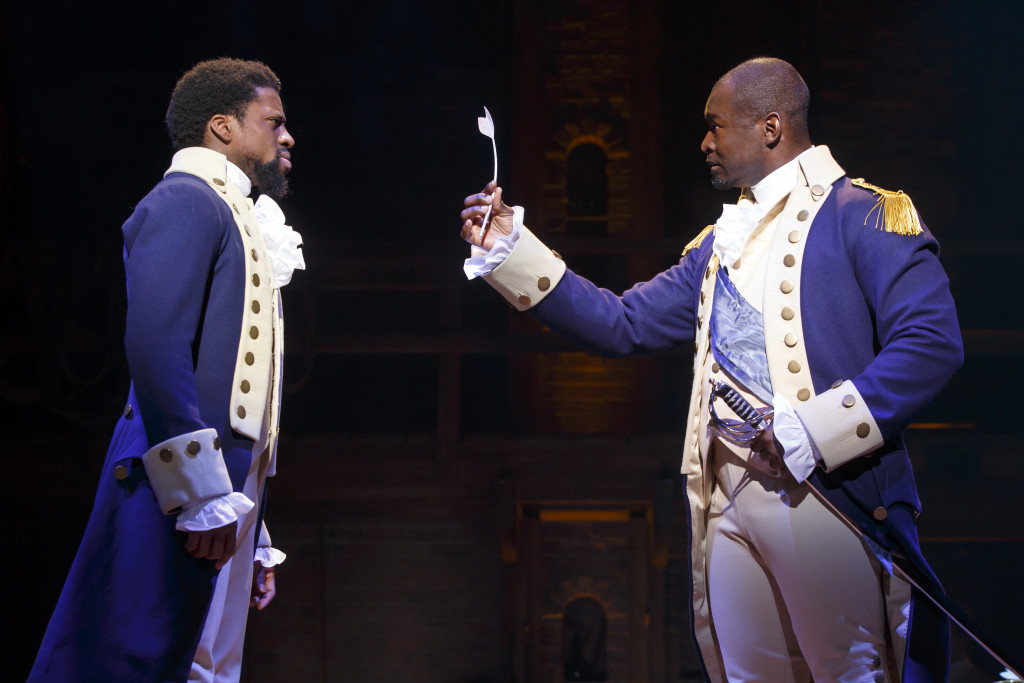
How accurate is “Hamilton” in its portrayals?
Hamilton was a very complex person who led a colorful life, and much about him in the show is consistent with the historical record. According to historians, he was indeed born out of wedlock, to a mother of mixed race, and orphaned young. Impressed by his intelligence and talents, an employer did take up a collection to pay for Hamilton’s move to New York to seek his fortune.
As in the show, Hamilton became a trusted, influential aide to future president George Washington during the American Revolution, and later President Washington chose him as the first secretary of the U.S. Treasury.
As for Hamilton’s personal life, Miranda took some liberties for dramatic effect. After marrying the beautiful and loyal Eliza Schuyler, Hamilton did have an ill-advised, year-long affair with the also-married Maria Reynolds, which tarnished his reputation. But the show suggests Hamilton was also in love with Eliza’s sister Angelica, for which there is no evidence.
Was Hamilton really a playboy?
His reputation as a serial rake is more a product of political rivalry than reality, contends historian Stephen F. Knott, author of “Alexander Hamilton and the Persistence of Myth.” Hamilton was detested by both fellow founding fathers and future presidents John Adams and Thomas Jefferson, who, according to Knott, “considered him to be a power-hungry, people-hating plutocrat…or an immigrant of questionable loyalty…or a serial womanizer or all three at once.” And they “continued to spin the public record long after Hamilton died in 1804.”
Knott also suggests the oft-repeated story about Martha Washington, George’s wife, naming her tomcat after Hamilton because of his sexual predilections, is a defamatory myth. But it wound up in “Hamilton” anyway.
And what about Hamilton’s political beliefs?
“Hamilton” touches on his primary concerns. Hamilton advocated for the ratification of the U.S. Constitution, and for the unifying power of a strong central governmental power over all the 13 states.
His monetary policies as the first U.S. Treasury Secretary supported creation of a strong national bank. He also urged President Washington to reconcile with post-war Great Britain and adopt a neutral stance toward the French Revolution.
Chernow and others have branded him as staunchly anti-slavery, and in 1785 he, along with New York Governor George Clinton, future Supreme Court Chief Justice John Jay and others, founded “The New York Society for Promoting the Manumission of Slaves, and Protecting of Such of Them as Have Been or May be Liberated.”
However, there are also records of Hamilton buying and selling several slaves for his own household, as did other founders, including Washington and Thomas Jefferson.
How did his death at 47, after a duel with Aaron Burr, match up with the show’s depiction?
The musical portrays an early friendship between Burr and Hamilton, which may not have been as close as portrayed. But there’s no doubt they were bitter political rivals by the time Hamilton outspokenly opposed Burr’s presidential bid against Jefferson.
While the musical suggests that this triggered the duel, it was a few years later, when Burr was enraged that Hamilton publicly opposed his bid to become governor of New York, that the face-off occurred.
And whether the portrait of the long-maligned Burr as an amoral opportunist and villain in “Hamilton” is accurate is another matter of speculation and disagreement among historians. He has some impassioned defenders, including Gore Vidal (who claimed to be a distant relative) in his historical novel “Burr.”
Much like the allegedly villainous composer Antonio Salieri gets to narrate the story of his musical rival Mozart in the play “Amadeus,” however, it’s Burr who narrates Hamilton’s saga — and gets some of the best songs to sing — in Miranda’s show. It’s just more dramatic that way.

